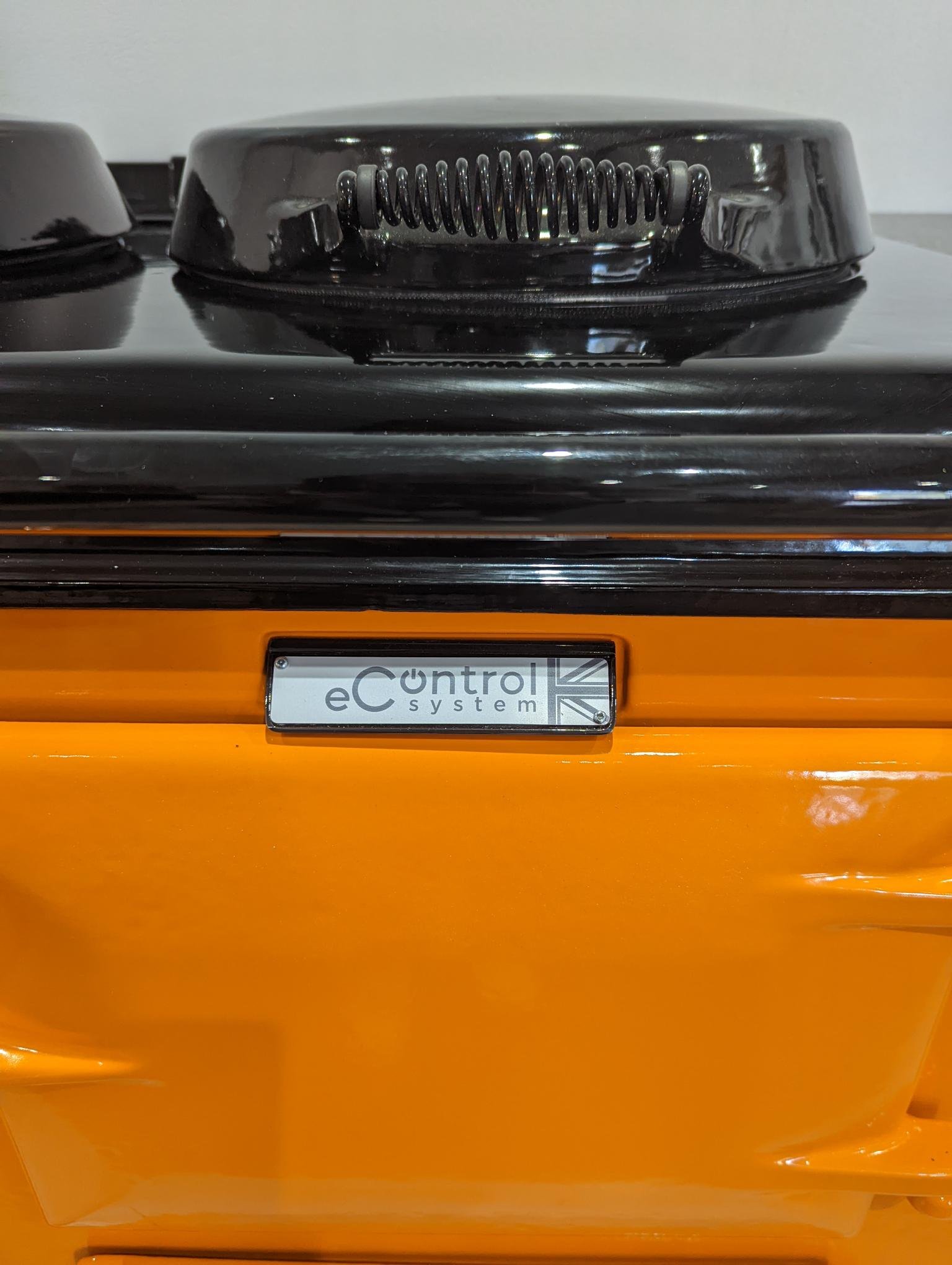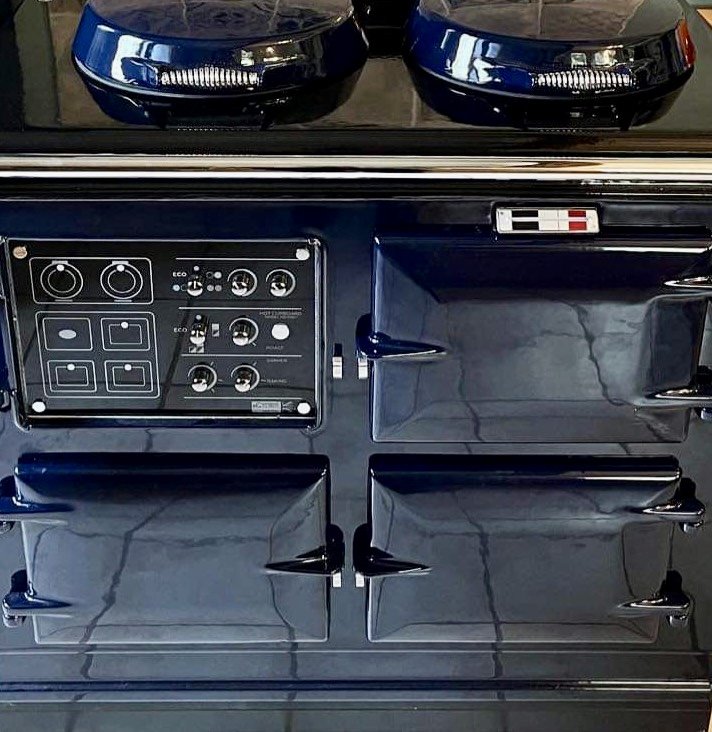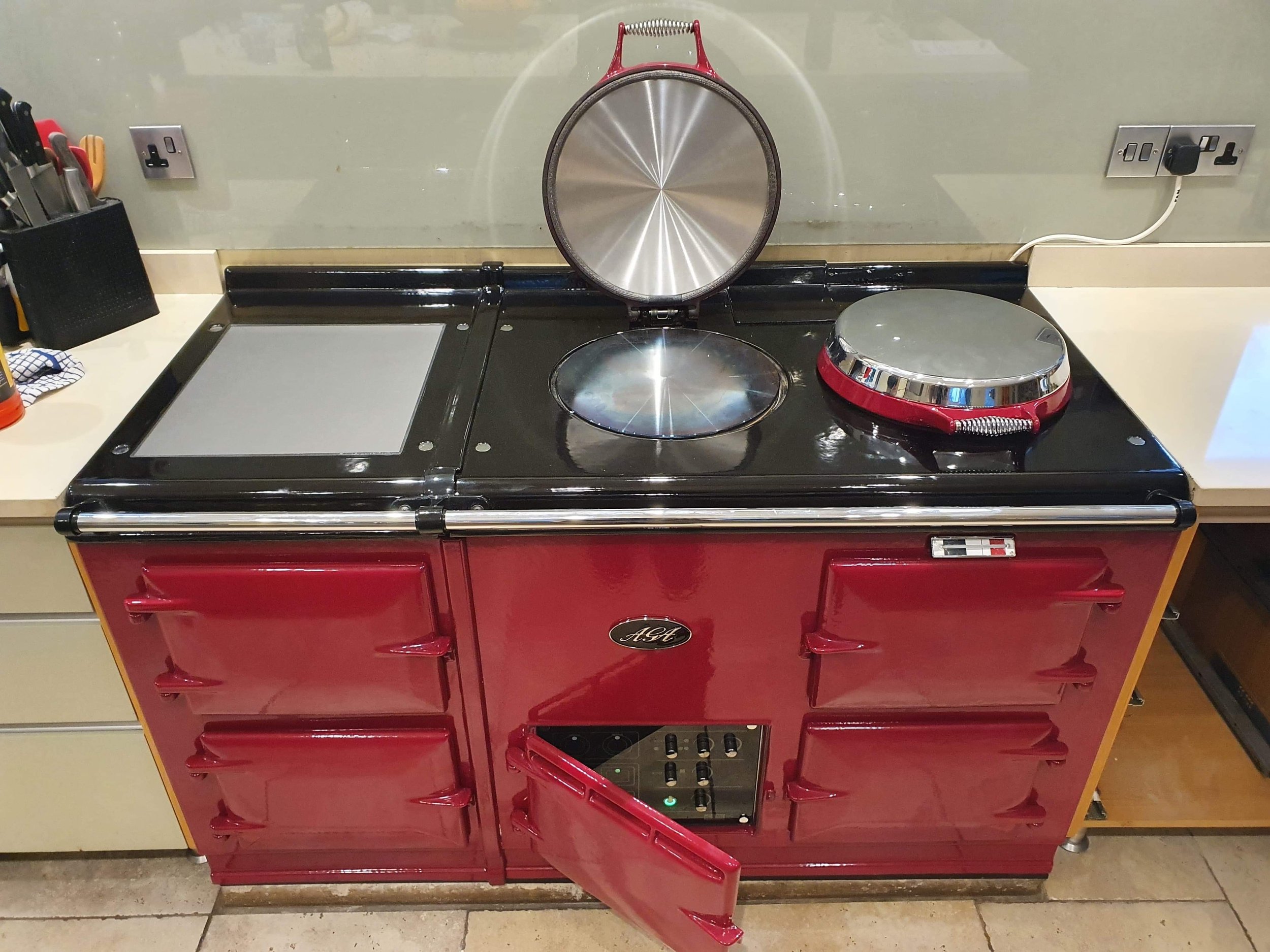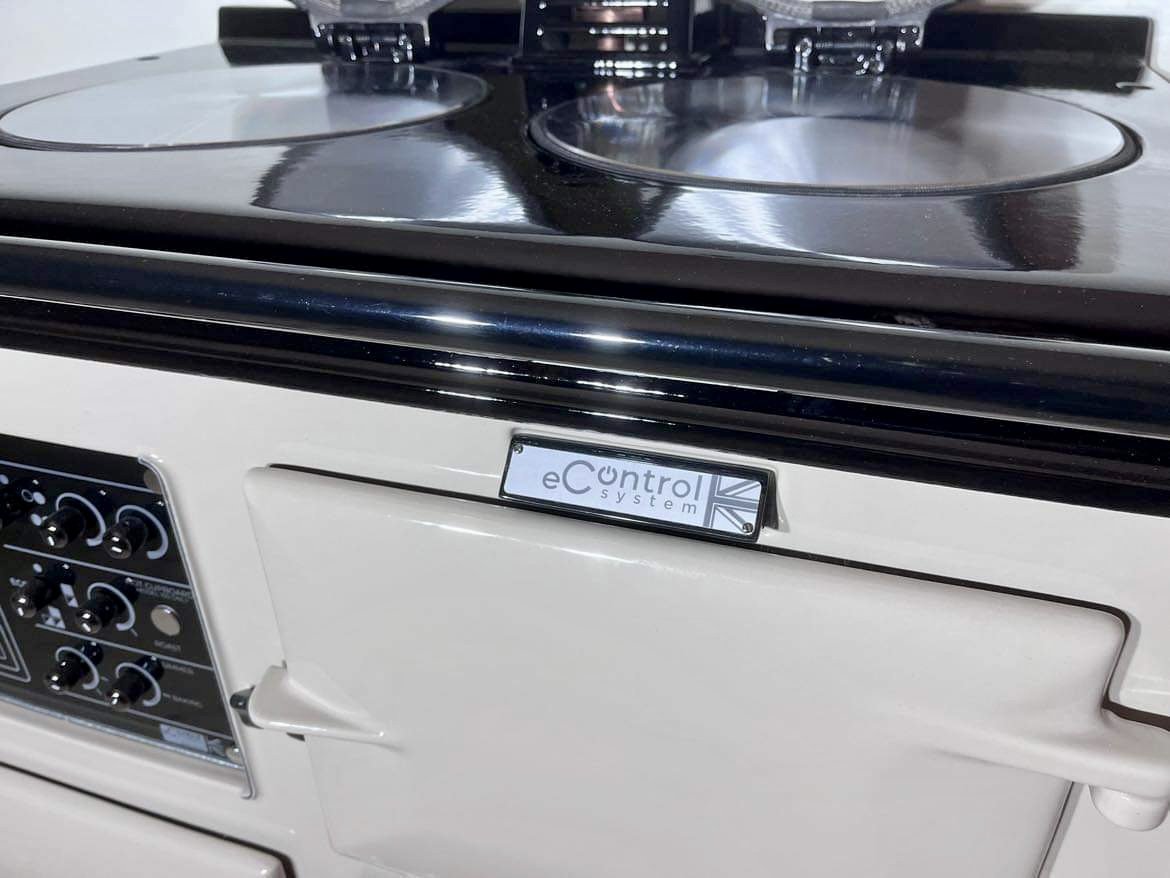eControl Series X
The eControl system is making waves in the Aga world. The growing popularity of the kit is testament to the quality of engineering, flexibility and low running costs it provides. The eControl Series X is amongst the most impressive Aga innovations we have seen in recent times and rapidly becoming the conversion of choice for many of our customers.
The eControl system works by completely re engineering the internals of the Aga. The original Aga is stripped down to its’ base and all internals and insulation removed. All parts no longer integral to the functionality of the converted Aga are removed. The Aga is then rebuilt with high grade foil backed blanket insulation, multiple elements and replacement hot plates before being recommissioned. From inefficient 13Amp or traditional gas or oil to a fully controllable modern system, all within the course of a day!
If you’ve been considering conversion for a while now, you may have seen the predecessors to the Series X - the Series 1 and 2. The Series X now launched supersedes these previous incarnations, with newly improved insulation, a digital display and lower running costs than ever before!
A major advantage of the eControl is the larger hob surface. As well as providing space for additional pans, the removal of the traditional insulating ring between the cast hotspot and Aga top plate, means heat transmission across the top of the Aga is improved, providing superior drying ability.
Suitability
The eControl system can be used to convert post 1974 purpose built 13Amp, gas or oil Agas to controllable electric.
Pre 1974, Aga Standard’s (early Traditional models) and Agas which were previously converted from solid fuel, are not suitable for conversion with eControl but can be converted with Electrickit.
Total Control, Dual Control and Aga’s subsequent ranges cannot be converted.
Functionality
eControl Series X offers full controllability and heat up times of as little as 90 minutes to full temperature from cold (including 30mins saturation). Most users will vary their usage quite dramatically across the year, leaving ovens on continually at Eco or Normal mode in the cooler months where ambient heat is required and switching on only for use in the summer season.
With the Series X, each zone is completely independent - ovens can be individually selected, as can the hobs. Digital displays indicate each oven’s temperature and dials allow you to finely tune to your preferred cooking temperature, reducing running costs by eliminating unnecessary waste.
The Controls
After conversion, the Aga will be controlled by a series of dials located on a glass screen inside the control door of the Aga.
The first dial selects the hobs. Hobs can be both on or can be selected individually. There is an eco setting, allowing the hobs to sit at a low consumption rate when additional room heat is required. We advise against continual use of the hobs to reduce running costs.
Each hotplate has a further dial, allowing you to adjust selected temperatures. Both plates can be used for boiling, simmering or anything in between. For even greater flexibility, INSTAHEAT is available, replacing one hotplate with a ceramic ring, perfect for the summer months and for when immediacy is paramount.
The remaining dials control the ovens. One selects from the preset functions - Eco, Normal or Full Ambient Heat Mode - and the remainder fine tune the temperature of each oven. The traditional roasting oven can be set to simmer, bake or roast, as can the 3rd oven in 3 oven models, whilst the traditional simmering oven can achieve up to baking temperature and beyond.
On 4 oven models, a further switch allows the user to choose to turn the hotcupboard on / off independently of the hot side of the Aga.
Advantages
Lower running costs versus most traditional models. Very low running costs when used flexibly
Controllable ambient heat, making this a year round cooker.
Exceptionally fast heat up times - Unparalleled heat up times with hobs up to boiling temperature in 14 minutes and 220c roasting temperatures achieved in as little as 62 minutes from cold. Ovens should be left for an additional 30 minutes before cooking more delicate dishes to achieve full saturation.
Excellent heat output when set to full.
Larger hob surface allows numerous pans to be heated simultaneously.
Removal of the traditional expansion ring allows greater transfer of heat across the hot plate surface.
Hobs can be left on when not in use. For longevity of the elements and lower running costs, we recommend leaving off until ready to use or at eco mode when greater ambient heat is required.
Ability to bring Simmering oven to higher baking temperature, even on 2 oven models.
Can be combined with a timer to turn on / off as and when required.
No servicing requirement.
5 year manufacturers parts warranty.
Eco mode - Improves heat up times versus heating from cold and reduces energy consumption when not in use.
Independent control of hobs / ovens- no temperature loss of ovens when hobs are in use.
Environmentally sound choice, with no combustion fumes.
Disadvantages
Higher running costs when run at full. Use flexibly for maximum efficiency.
Runs off a single spur. Some Aga kitchens may have insufficient power available so more comprehensive electrical preparation may be needed.
Limited timer options available due to power output.
The kit is new to the market and less time proven than other models. Parts are however of exceptional quality and from a large proven supplier.
Whilst cooking techniques are very similar to traditional Aga cooking, some tweaks may be required.
The top plate becomes very hot when the hobs have been in use (due to the removal of the expansion ring). Although this is advantageous in the colder months, it may be a detractor in the summer months when room heat is not required. The addition of the Instaheat hob for Summer use may be advisable where this is a concern.
Recommended baffle in roasting oven occupies top runner.
Baffle can be awkward to remove for grilling.
Hot cupboard element on 4 oven conversion occupies some of warming space.
Running Costs
Manufacturers consumption data based on the 21p kw/hr January 2024 price cap:
- Consumption will vary with usage and cooking methods
- Using Wi-fi timer, ECO mode and turning hobs on/off from cold will reduce overall consumption
Consumption Data (2 Oven)
• Eco mode (Continuous operation - Baking and Simmering temperatures) Estimated consumption - 0.22 kw/hr, Cost @ 21p kw/hr - £7.76 p/w
• Normal mode (Continuous operation - Roasting and Simmering temperatures) Estimated consumption - 0.41 kw/hr, Cost @ 21p kw/hr - £14.47 p/w
• Ambient heat mode (Continuous operation - Roasting & Baking temperatures) Estimated consumption - 0.48 kw/hr, Cost @ 21p kw/hr - £16.93 p/w
Consumption Data (4 Oven)
• Eco mode (Continuous operation - Baking and Simmering temperatures) Estimated consumption - 0.22 kw/hr, Cost @ 21p kw/hr - £7.76 p/w
• Normal mode (Continuous operation - Roasting and Simmering temperatures) Estimated consumption - 0.41 kw/hr, Cost @ 21p kw/hr - £14.47 p/w
• Ambient heat mode (Continuous operation - Roasting & Baking temperatures) Estimated consumption - 0.48 kw/hr, Cost @ 21p kw/hr - £17.29 p/w
Hotcupboard on (Continuous operation - Simmering and Warming temperatures) Estimated consumption - 0.26 kw/hr, Cost @ 21p kw/hr- £9.17 p/w
Consumption Data (Boiling Hob)
• At full temperature – Turned on as required Estimated consumption - 0.48 kw/hr, Cost @ 21p kw/hr - £0.10 p/h
Consumption Data (Simmering Hob)
• At full temperature – Turned on as required Estimated consumption - 0.39 kw/hr, Cost @ 21p kw/hr - £0.08 p/h
Consumption Data (Both hobs in Eco)
At eco - Turned on as required Estimated consumption - 0.40 kw/hr, Cost @ 21p kw/hr - £0.09 p/h










